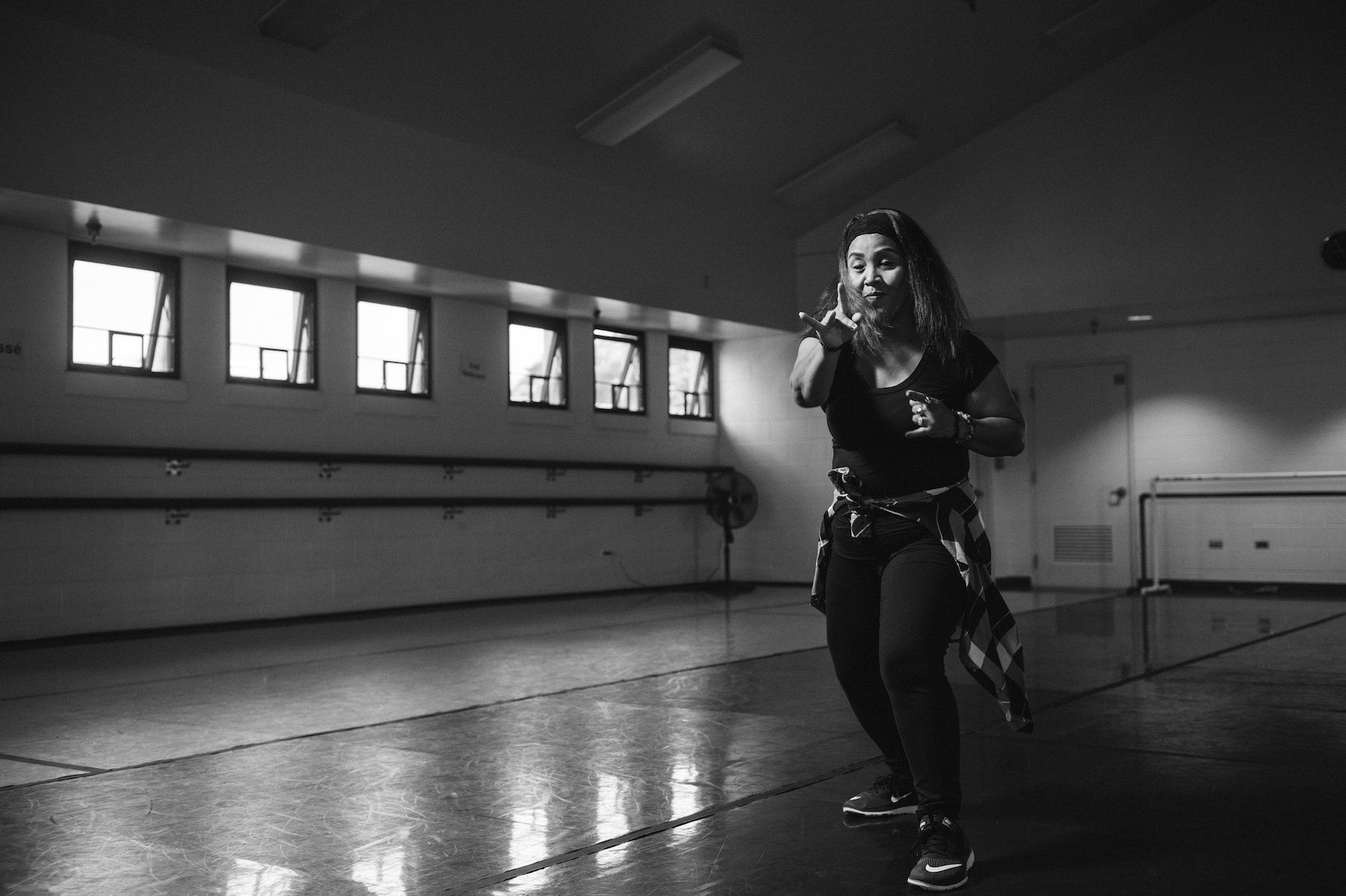Images by John Hook, photographed at St. Andrew’s Priory dance studio
In his audition tape for the nationally televised competition So You Think You Can Dance, Hawai‘i-born Mark Villaver credits his mom with introducing him to dance. A top-10 contestant on the 2017 season of the show, Villaver can be seen grooving with his mom—who beams with the excitement of a young girl—to Usher’s “She Came to Give It to You” in a 2014 YouTube clip that has garnered more than 1.6 million views. What may be more surprising than Villaver’s ascent, however, is the fact that his mom, Emilia Villaver Daquioag, is deaf.
Emilia does not know if she was born deaf, or if it manifested early in her life. The 49-year-old was born in Cebu, a province in the Central Visayas region of the Philippines, and her parents could not afford the advanced medical care that could identify her hearing impairment. Her father earned money from chicken fights and the occasional game of dice, pocketing five Philippine pesos a game (the equivalent of a dime today). It wasn’t until Emilia and her family, including her seven siblings, moved to Hawai’i when she was 2 years old that she and her twin sister, Amalia (also a dancer) were identified as deaf. “I noticed I was different when I entered elementary school,” Emilia says, signing swiftly. “Everybody was speaking, and I was completely lost. I had no idea what was going on.”
To communicate, Emilia relied on facial expressions and hand gestures—a creative combination of Filipino and American motions, and others that she and her sister made up. Emilia did not learn American Sign Language until she was 25 years old, and even now, her family is not fluent in the language, save for Amalia, who taught Emilia after learning it from deaf colleagues at her first job.
With limited means of communication, and feeling isolated from her peers at school, Emilia found solace and acceptance through dance. She recalls observing street dancers practicing at Kanoa Park in Kalihi. “I would just watch and kind of drool … watching all the dancers, wanting to be like them,” Emilia says. The two sisters studied and mimicked their movements, and then interpreted them. Despite a short stint of classical jazz classes, Emilia most enjoyed the versatility and creative freedom of urban styles like hip-hop, popping, and locking.

Vibrations are what connect Emilia with the rhythm, beat, and emotion of a song. “I really focus on the movement of the music, and I try to match that,” she says. “I’m not as interested in the story of the song. I just like the beat. What feels good to me, that’s pretty much what I follow.” Naturally, she was drawn to genres with distinct bass lines, like rap, hip-hop, and pop. Lyrics, on the other hand, are completely irrelevant. “If someone is cussing in a song, I have no idea,” she says. “I’ll be dancing, I’ll be grooving to it, and people will smack me and say, ‘Hey, that’s a really dirty song!’ I’m like, ‘I don’t care. I just like it!’”
In high school, Emilia had aspirations to become a professional dancer, but these were put on hold after she became pregnant with Mark’s older brother. Instead, her dreams have been fulfilled by the success of Mark, a professional dancer who has performed with Ariana Grande, Demi Lovato, and Taylor Swift, and who is a member of L.A.-based dance group Quest Crew. She also is happy that she can pass along her experience to students at the Hawai‘i School for the Deaf and Blind, where she serves as a house parent for the deaf students who dorm during the school year. In addition to supervising the students, she teaches them how to dance as an after-school activity.
Dance is a physical manifestation of emotion, a universal language, and expression through movement. For Emilia, who considers herself culturally deaf because of how she relates to the hearing-labeled world, dance has given her confidence and the support of a community. It has filled the silence.
How Emilia Listens
eyes Emilia uses visual cues in place of auditory ones. She observes the emotion and body language of others, and then uses that information to react.
body Emilia’s body moves to the vibrations of a song. Her favorites? “WTF” (“Where They From” by Missy Elliott featuring Pharrell Williams), and anything by Chris Brown or Justin Bieber.
mind Emilia tries her best to understand how people communicate differently. She recommends learning a new language, even a bit of sign language to communicate with people who are deaf.
Location credit to St. Andrew’s School.

